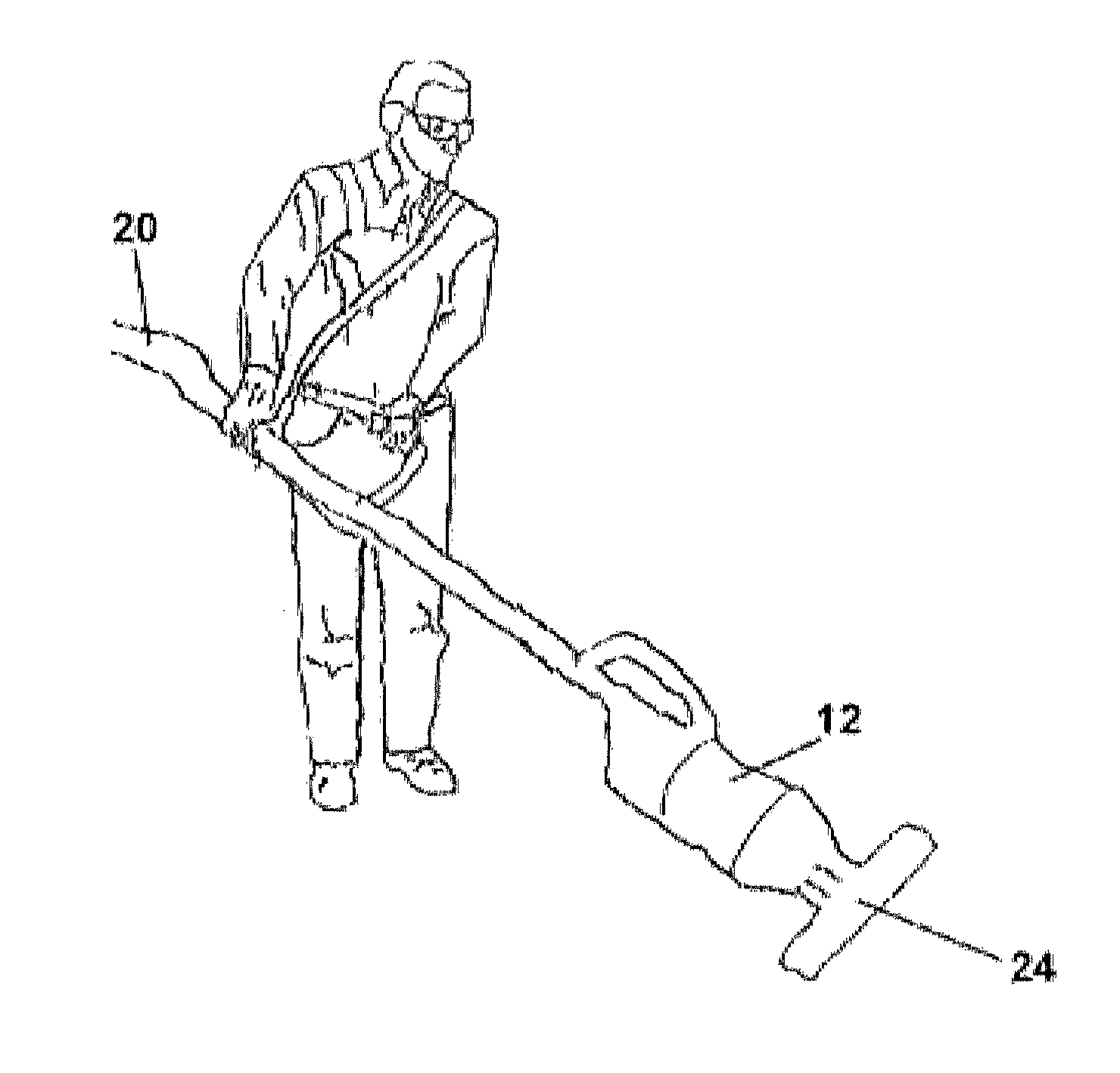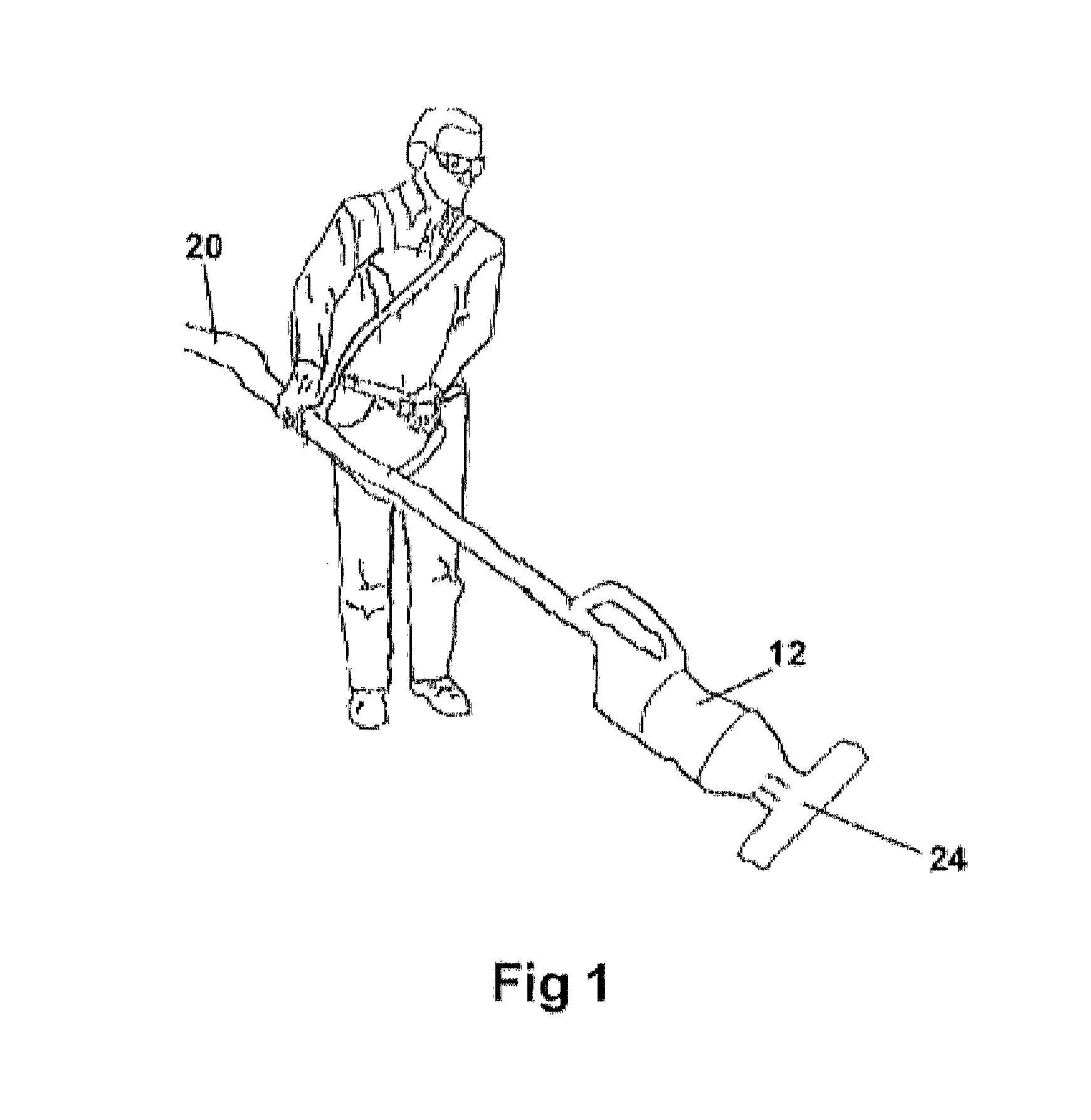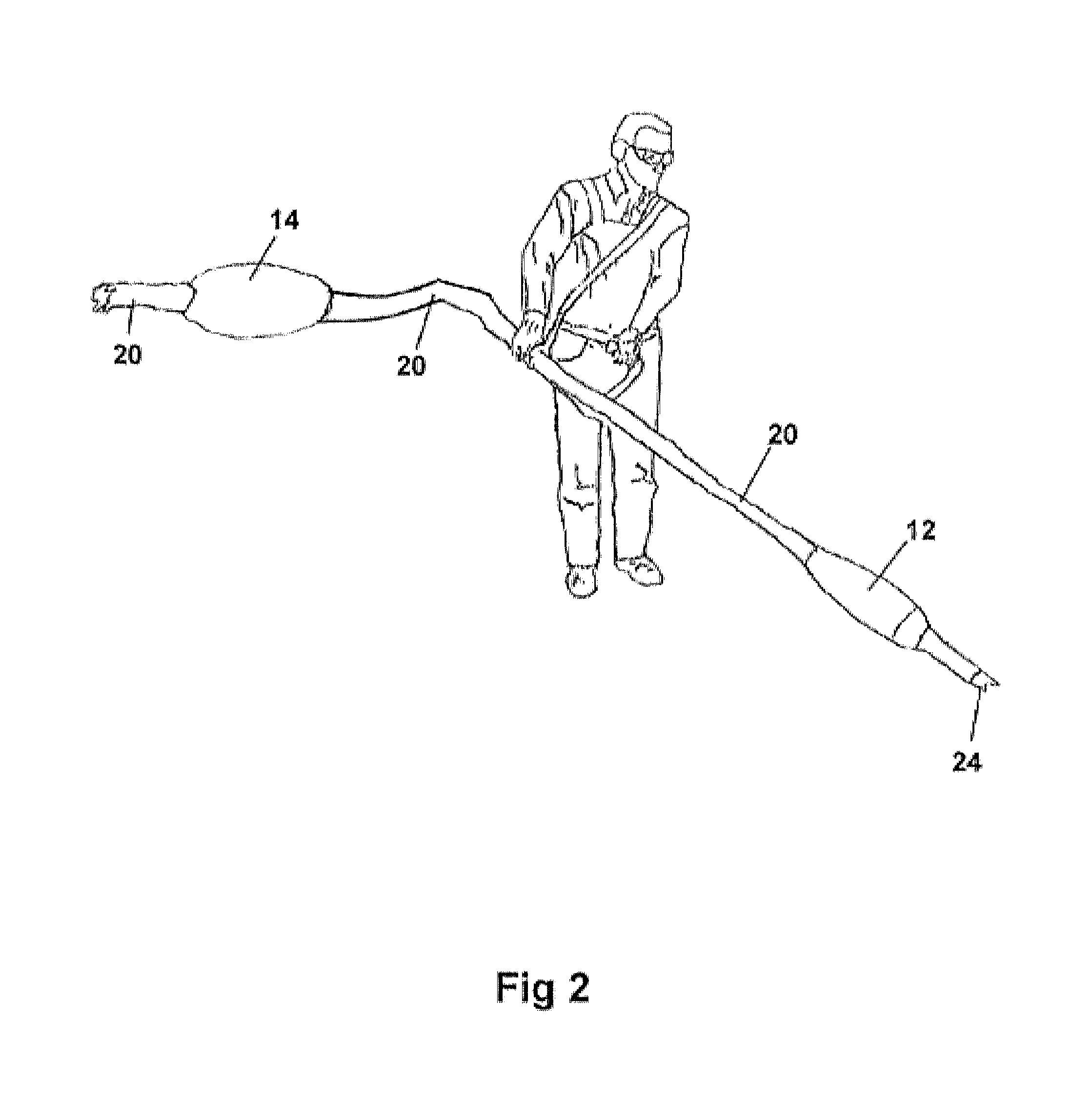Apparatus for removing a layer of sediment which has settled on the bottom of a pond
a technology for removing sediment and sediment layers, which is applied in the direction of water treatment multi-stage treatment, cleaning using liquids, and water treatment water, etc. it can solve the problems of insufficient pond cleaning for residential pond owners or pond servicing, use of such devices, and difficulty in accessing deeper portions of ponds. , to achieve the effect of reducing the wear and tear of the impeller mechanism of vacuuming and suctioning units and the reduction of the difficulty of handling leaves and larger debris
- Summary
- Abstract
- Description
- Claims
- Application Information
AI Technical Summary
Benefits of technology
Problems solved by technology
Method used
Image
Examples
Embodiment Construction
[0075]FIG. 1 illustrates the apparatus of the invention 10 in a working environment for removing a layer of sediment which has settled on the bottom of a pond. The apparatus comprises a frame with a first end and a second end. A chamber (ref. 12) with a first end (ref. 24) and a second end (ref. 20) is positioned proximate the first end of the frame. The chamber provides a conduit for conveying slurry to the input port of a pump and adjustment of the size of apertures can be made to adjust the ratio of sediment to water removed from the bottom of the pond.
[0076]Preferably, a single wheel (ref. 16) supports the vacuum unit and such unit is electrically powered via a long cord. The vacuum unit may include an inlet port and an outlet port. Preferably, the input port is in fluid communication with a chamber. A flexible conduit is in fluid communication with the second end of the chamber and with open conduit which extends above the level of pond.
[0077]Various patents and patent publicat...
PUM
| Property | Measurement | Unit |
|---|---|---|
| length | aaaaa | aaaaa |
| diameter | aaaaa | aaaaa |
| diameter | aaaaa | aaaaa |
Abstract
Description
Claims
Application Information
 Login to View More
Login to View More - R&D
- Intellectual Property
- Life Sciences
- Materials
- Tech Scout
- Unparalleled Data Quality
- Higher Quality Content
- 60% Fewer Hallucinations
Browse by: Latest US Patents, China's latest patents, Technical Efficacy Thesaurus, Application Domain, Technology Topic, Popular Technical Reports.
© 2025 PatSnap. All rights reserved.Legal|Privacy policy|Modern Slavery Act Transparency Statement|Sitemap|About US| Contact US: help@patsnap.com



